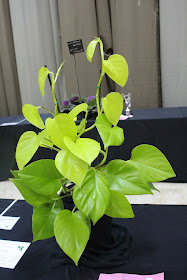A scene from Heartstrings' recent play; it's now doing 'Double Trouble'
By
Margaretta wa Gacheru (posted 31 July 2019)
While Heartstrings’
‘Double Trouble’ runs this weekend at Nairobi Cinema and the ‘improv’ team of ‘Because
you said so’ has a show next Saturday, 10th August, at The Junction,
there’s lots happening on the horizon in Kenyan theatre.
Kenyan
writers, directors and producers have gotten in gear, preparing shows for now as
well as the rest of this year and next.
In the immediate,
next Wednesday, 7th August, Kenyatta University’s Dr Emmanuel Shikuku
has revived David Mulwa’s classic script, ‘Redemption’. It will only be staged
for one day, at 3pm and 6pm at Kenya Cultural Centre’s Ukumbi Mdogo.
A scene from an earlier Fanaka Arts Kikuyu comedy
Kikuyu
theatre is also alive and well as Fanaka Arts Theatre is staging ‘Hihinya Ihuha’
the following weekend, from 9th August at Alliance Francaise. And
the weekend after that, on Friday, 16th August, Prevail Arts Company will revive
Martin Kigondu’s ‘Matchstick Men’ also at Ukumbi Mdogo.
Bilal Mwaura (R) will costar in Martin Kigondu's Matchstick Men
As exciting as
all this upcoming activity is, what may be the theatrical event of the year is
Hearts of Art’s original creation of ‘Wangari Maathai the Musical.’ It
certainly must be one of the more ambitious projects that HOA’s founder and playwright
Walter Sitati has embarked on. But he has also received lots of support both
from his theatre company and Gilbert Lukalia who Sitati says came up with the
bright idea first.
“I had
actually been thinking about such a project, but when Gilbert brought it up, I
knew we had to do it,” says Sitati who is responsible for virtually all the
scripts that Hearts of Art has produced since he formed the company shortly
after completing a degree from Moi University.
Gilbert Lukalia will direct 'Wangari Maathai' the Musical
Gilbert is
directing the show. But as it’s scheduled to open in November, he and Walter
are still in the process of casting. In any case, this is a show to highly
anticipate.
The other amazing
news comes on the heels of ‘Sarafina’s finale last Sunday night. At the insistence
of the Minister of Culture, Dr. Amina Mohamed, Nairobi Performing Arts Studio
is bringing back the musical! The earliest booking Sarafina’s producer-director
Stuart Nash could get at KNT is 4th-6th October.
Minister of Culture, Amb. Amina Mohamed (R) insisted Sarafina be restaged after watching it the last night of its run at KNT. It will happen first weekend in Octover. (L) Artist Geraldine Robarts.
Finally,
NPAS also plans to put on Nairobi Half-Life and Lion King early next year. And
this October, NPAS brings ‘Blood Brothers the Musical’ to University of Nairobi.
' Wangari Maathai the Musical' is being scripted by Walter Sitati (L) and directed by Gilbert Lukalia (R)
' Wangari Maathai the Musical' is being scripted by Walter Sitati (L) and directed by Gilbert Lukalia (R)
















































